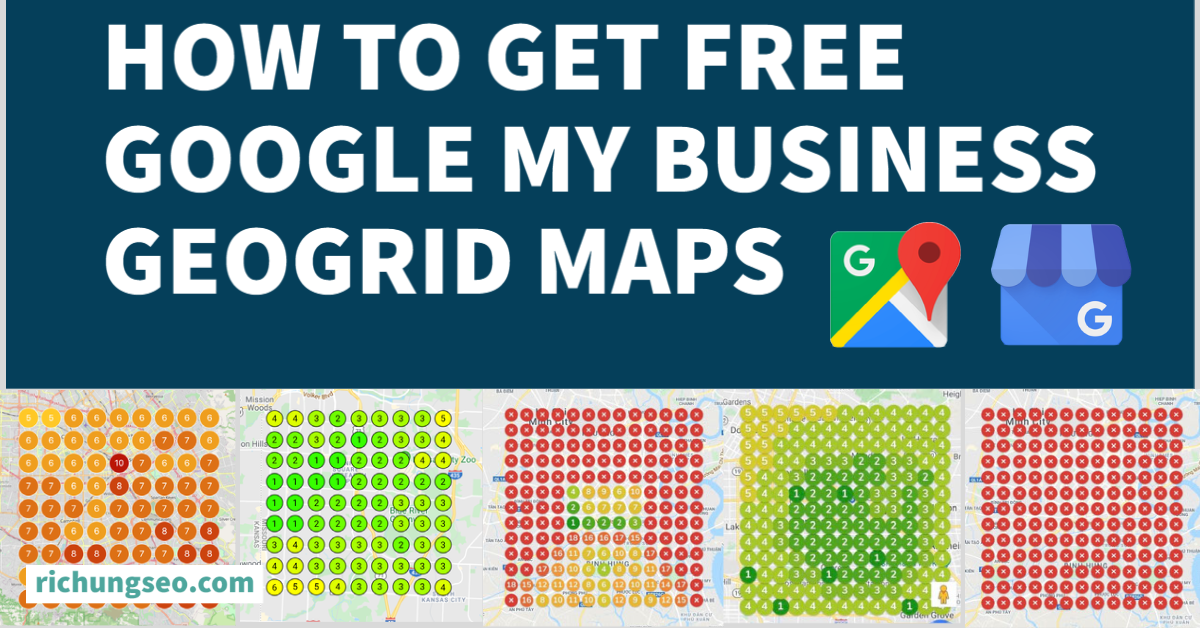Local SEO can be pretty expensive when you add up all the little costs that creep up. To save a few hundred bucks a year, I’ve laid out a little hack I’ve discovered while using Geogrids. It would be nice to rely only on Google My Business, Google Analytics, and Google Search Console (all free by the way) but the reality is there are better and more targeted tools out there that says the things Google won’t say. One of these tools is the Geogrid tool.
Table of Contents
You’ve probably seen these in countless local SEO tutorials, freelancing platforms like Fiverr, and other vendors promising the illustrious top spot on the google local map pack. What the Geogrid is, is a heat map that layouts the grid points in and around your business location which are direct API connections with Google. If you’re a new business, chances are your points will return mostly in the red area which signifies a lower ranking. You’ll notice a number assigned to each point which is actually the ranking number of that specific location. If you’re an older business and still seeing lots of red, then it means you got some SEO work to do which is exactly why I’m here. To summarize, you want to see a sea of green instead of the red sea.
What are my Options?
As far as I know, there are 3 main companies that offer this service. If you know of more, please shoot me a message and I can look into it. These 3 are Local Falcon, Local Viking, and Bright Local.
For those who want just the geogrid map, you are out of luck because this service is packaged together with other Google My Business (GMB) tools not really ideal for what we’re after. It may be worthwhile if you have multiple clients however if you’re only interested in just the Geogrid feature, then as you can see from the table you can easily save at least $240 a year by following my method. One note worth mentioning is that Local Falcon has a “Pay as You Go” pricing option which bypasses the monthly plan. For reference, a 7×7 geogrid would be roughly $3 each or $0.05 per pin drop. If you ask me this is a bit pricey considering you can get 153 scans at $24.99 a month. If you decided you wanted to pay, then I suggest going with Local Viking as they offer the best bang for your buck at $20 a month compared to Local Falcon at $24.99 a month for the same amount of Geogrid scans.
What do I need?
If you made your way down here, it appears you are convinced to try out my little hack. All you will need are really just 3 things:
1.) Local Falcon
Luckily for us, Local Falcon is offering free trials. I’ve been using their free trial for months now and I havent received any type of warning messages nor does it appear they will be ending their free trial. When you sign up, they will give you 100 credits for free which is enough for a 10×10 grid if you really want. However, if you’re just starting out a 7×7 works fine.
2.) Temporary Email
There are two ways to go about this, either create hundreds of new email accounts or a shortcut I like to practice is using temporary emails. The one I found most reliable is TempMail. Other ones I’ve used were flagged by Local Falcon therefore have not been bueno.
3.) Temporary Phone Number
The other info Local Falcon requires is a phone number. They didn’t do this before but now have required a phone number. For this reason, I recommend freephonenum. It has worked for me for quite some time therefore I recommend this one.
*GMB Geogrid Tracker (Optional)
You’re going to need a way to keep track of all the accounts you made. How else would you be able to compare your progress week to week? If you do not have a tracker, I’ve shared one I use regularly. The one seen above is embedded, and you can also find it by clicking below 
You will be taken to my google spreadsheet. You won’t be able to make any edits on it until you make your own copy first. To do that, go to File and then Make a Copy.
Like my content? If so, check out my podcast for the latest SEO news. 👇🏻
How to get free Geogrid (step by step) tutorial:
Step 1: Open up tools and Local Falcon.
Open up TempMail, Temporary Phone Number, and Local Falcon. This will make the process faster.
Step 2: Sign up with Local Falcon
Once you’re on the home page, click ‘Try it Now for FREE‘
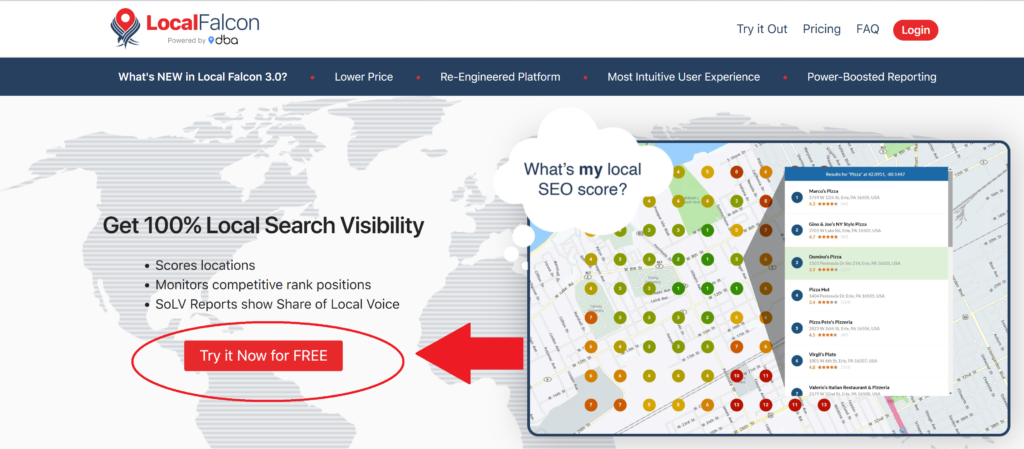
Then Enter your information.
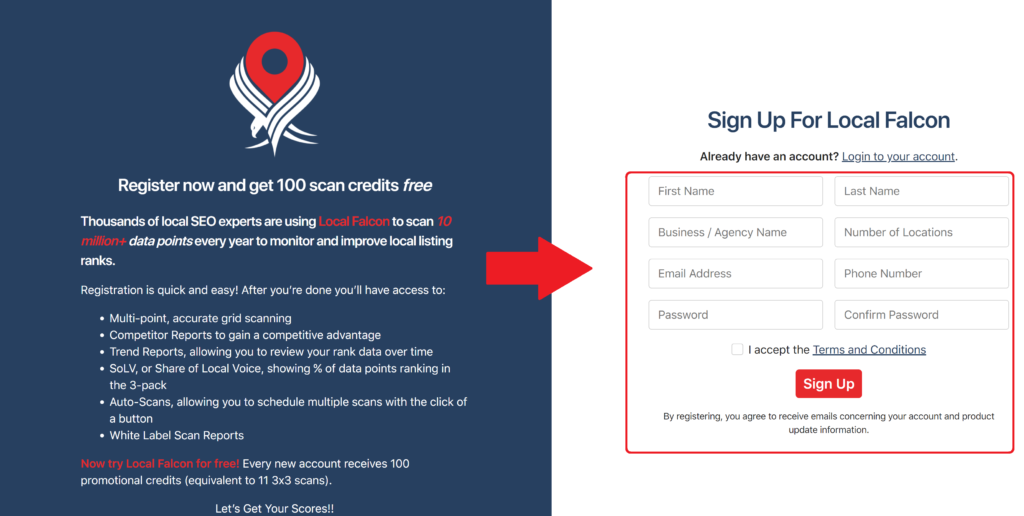
As you sign up, make sure to leave your info in the tracker so you do not forget in the future to compare results. If you’re not sure about what name to put you can use a name generator. This will come in handy if you need to make multiple accounts. The same idea applies with the password generator or just use the same password over and over again.
For the Business / Agency Name Box I just use the same First and Last Name. As for the Number of Locations, I usually just type in 1. Once you click “Sign Up” an email will be sent to you for verification.
Step 3: Check Temp Email for Verification.
Go to TempMail to check your email. If you do not see it right away, click refresh.
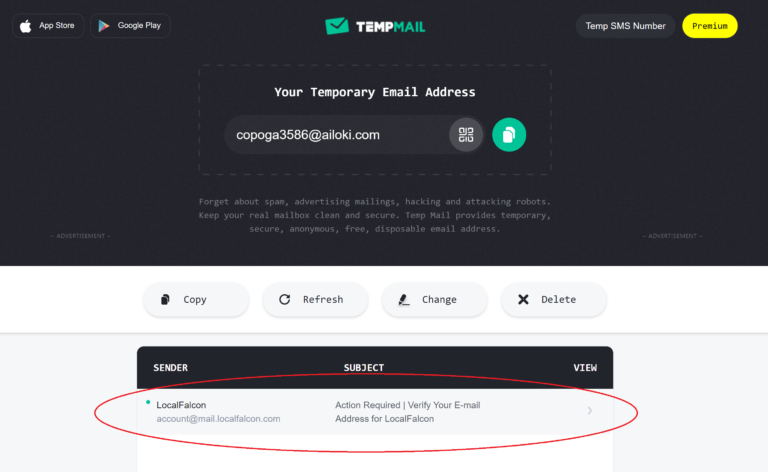
Open the message and then click on ‘Verify Your Email Address‘.
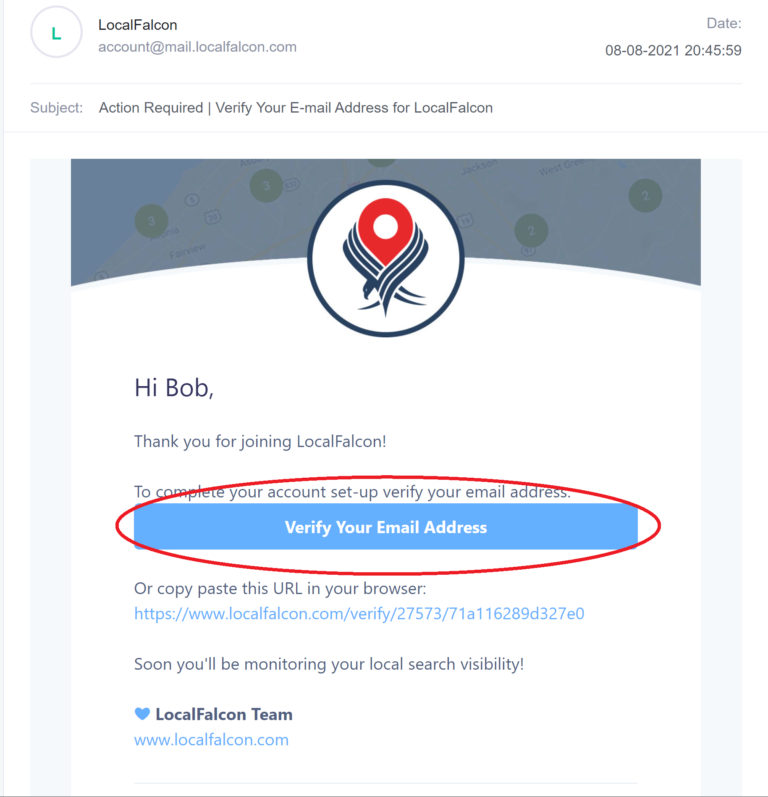
Step 4: Input your Google My Business
Once you’ve verified you will then be taken to the next window. I usually ‘SKIP TO NEXT STEP‘. because I’m not a fan of connecting my accounts.
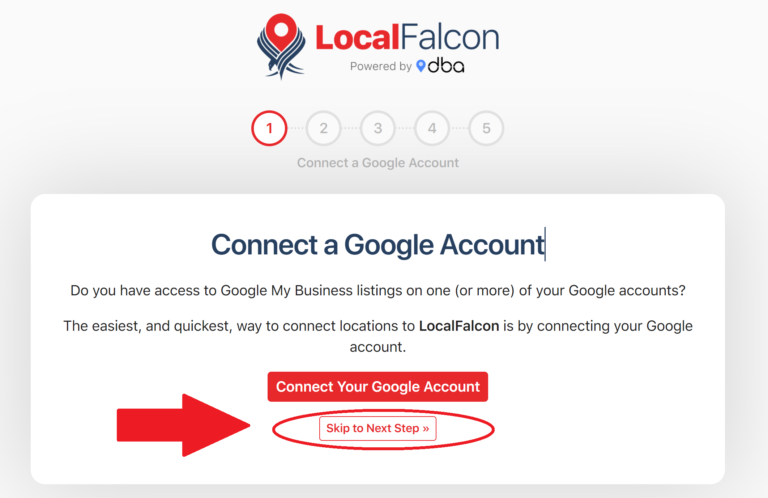
In the next page, you can search your location. For demo purposes, I will use the local favorite here in San Jose, In-N-Out Burger. Type in your business, click SEARCH, and then the results should populate. If you have more than one location, then select the location you wish to rank for.
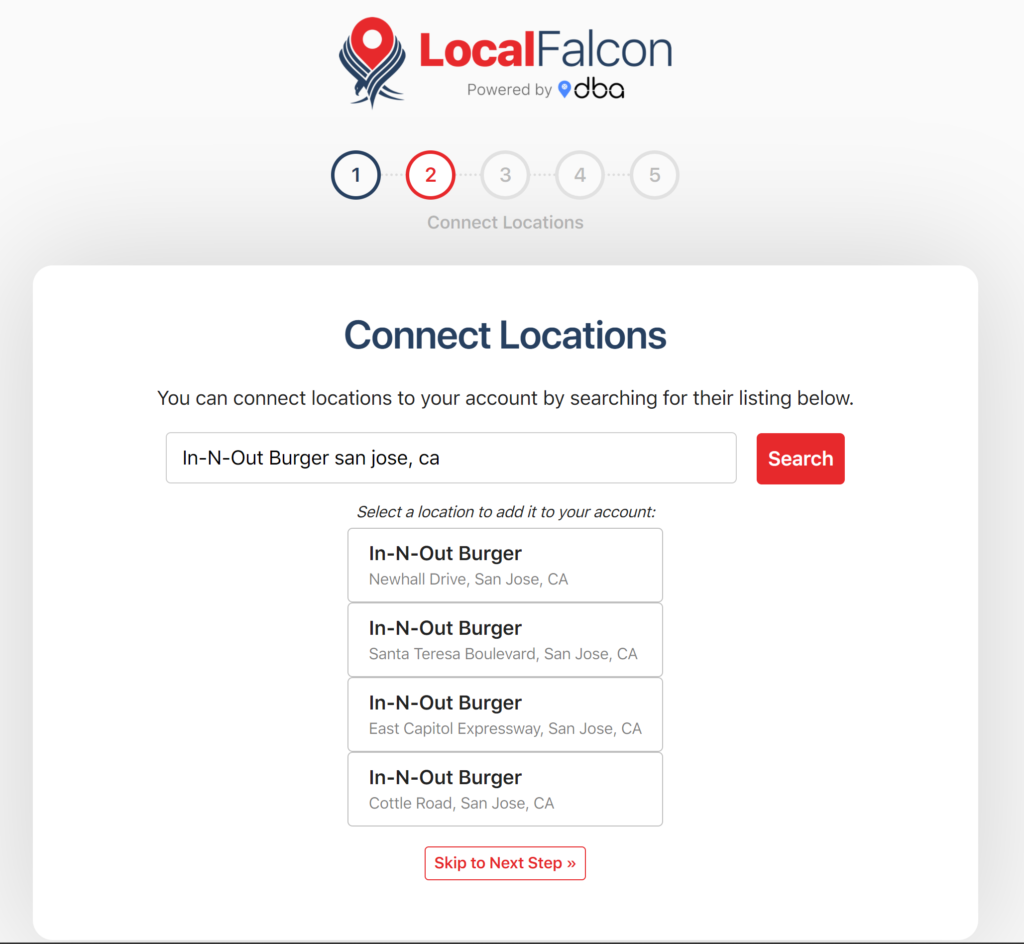
Next, you will set the scan settings. For Keyword, type in the keyword you want to rank for in that location. In my case, I’d like to see my local rankings for cheeseburgers. How does In-N-Out Burger rank for such a keyword. We’ll find out.
You will also choose the grid size and the grid radius. If you’re just starting, then a 7 x 7 and a 1 mile radius are adequate however, once you’re seeing more green then you may want larger geogrid maps. Since we just want a free trial, select ‘Run One Time‘. Then when you’re ready click ‘Run Scan‘.
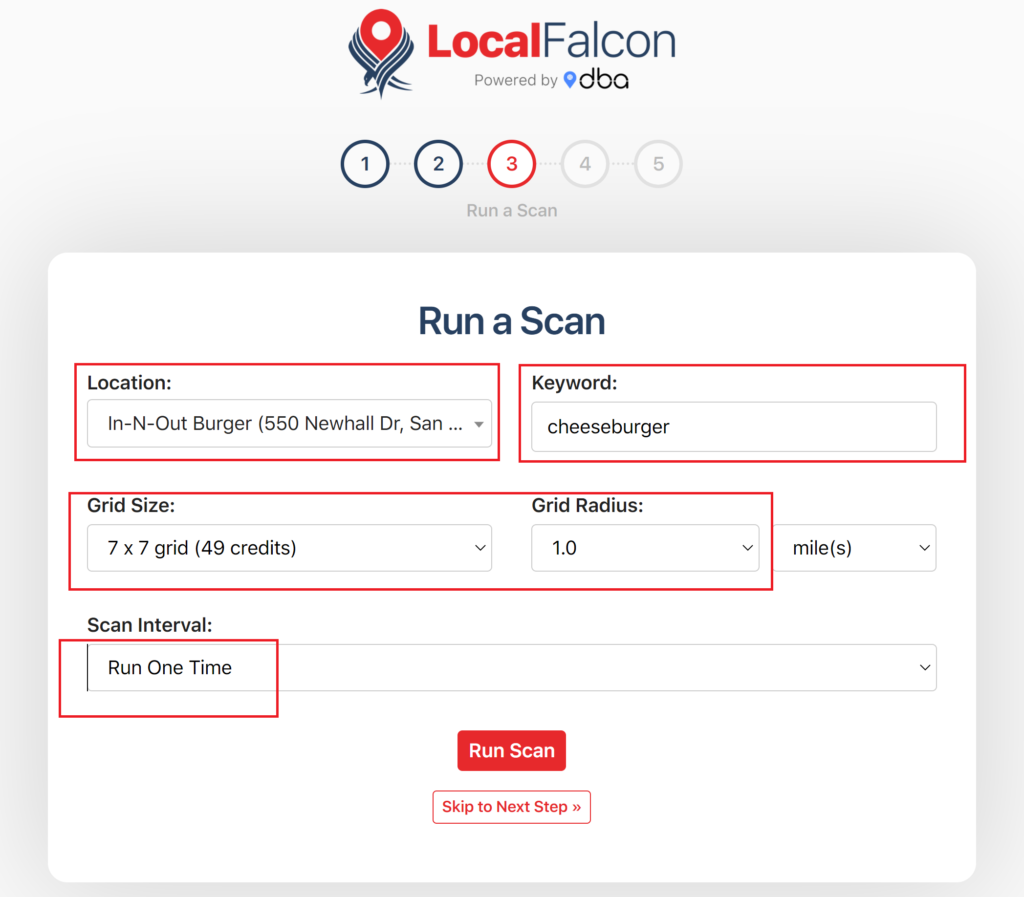
Then, Local Falcon will ask you to choose a Credit Package. Most people are tricked into making a purchase, however if you glance a little lower underneath is a ‘Pay as you go’ Option. Click ‘Opt for Pay-As-You-Go Credits’.
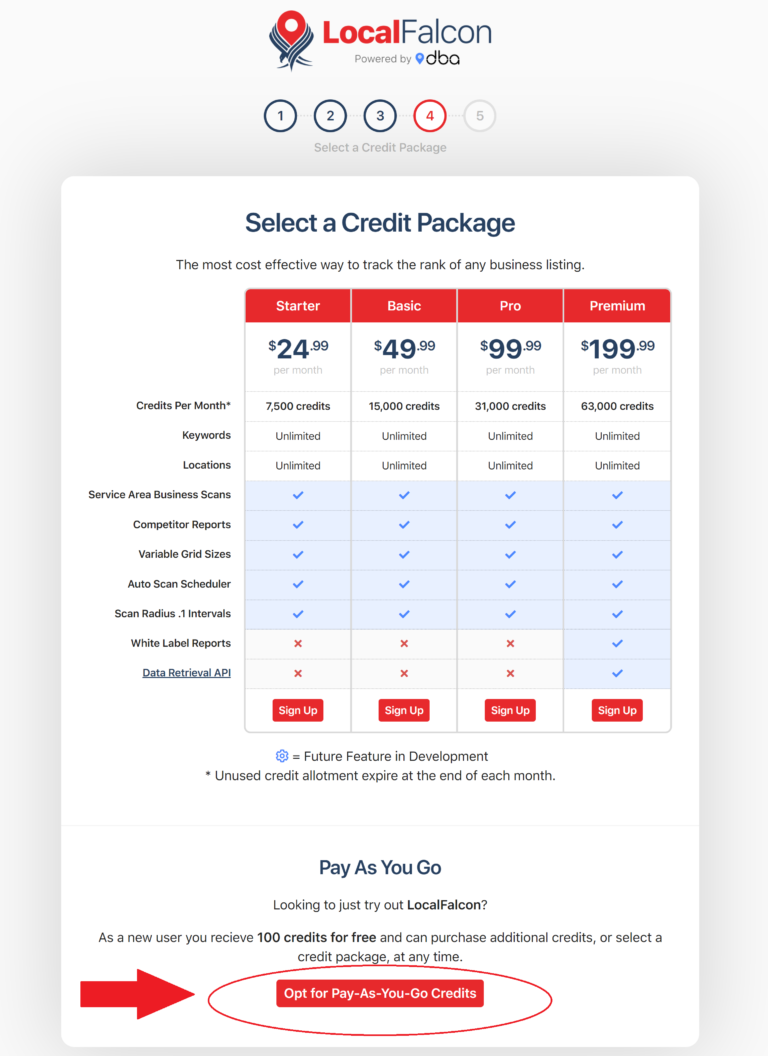
Because you’re a new user, you will be rewarded 100 free credits which will get you the free Geogrid Map. You can go up to a 10×10 grid.
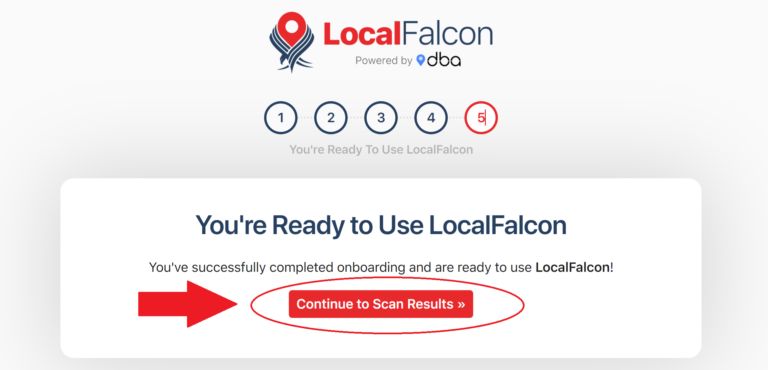
Step 5: Enjoy your Geogrid Map.
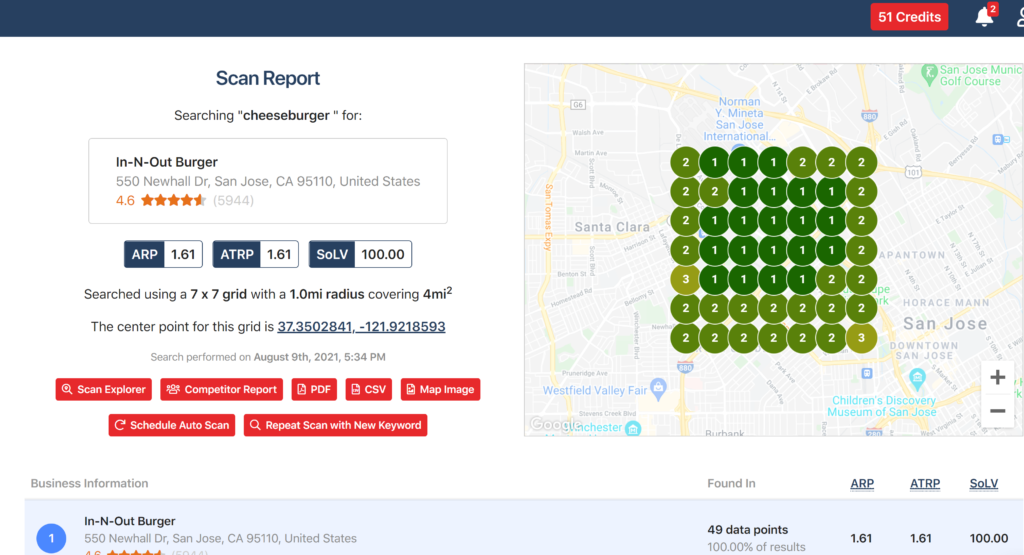
If you are local and in the area, feel free to visit or reach out to me at:
Enjoyed the article? Please share!
